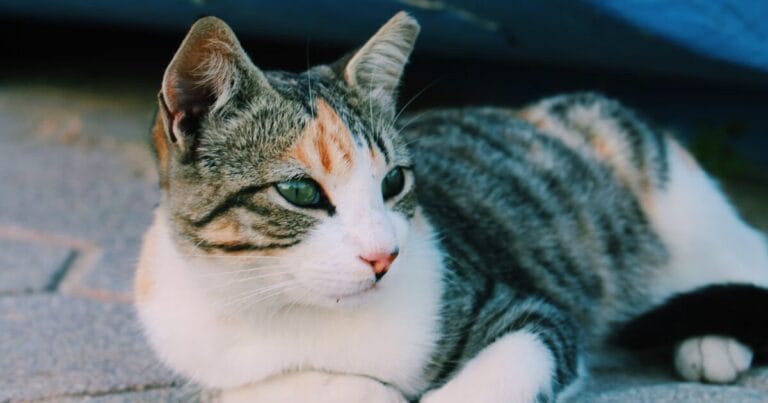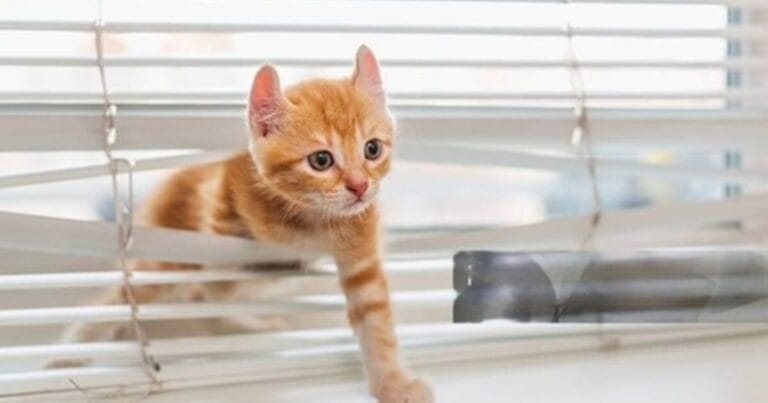Are you a proud owner of a declawed feline friend? If so, you may have wondered if your fur baby’s climbing days are over. Well, hold on to your scratching posts because we’ve got some surprising news for you!
In this blog post, we’re diving deep into the intriguing question: Can declawed cats still climb? Get ready to unravel the secrets behind these acrobatic wonders and discover how they navigate up tall surfaces without their trusty claws. So, let’s embark on an exciting journey through the world of our agile four-legged companions and find out if those paws are still destined for great heights!
Introduction to Declawing and its effects on cats
Declawing is a controversial surgical procedure involving removing a cat’s claws. It is also known as onychectomy and is commonly performed for two reasons – to prevent cats from scratching furniture or people or as a means of behavior modification. While Declawing may seem like a simple solution to avoid damage caused by scratching, it is essential to understand its potential effects on a cat’s physical and mental well-being.
The Procedure
During the declawing procedure, the veterinarian removes the claw itself and the entire first knuckle of each toe. This process requires cutting through bone, tendons, nerves, and blood vessels, which can result in significant pain for the cat. The traditional method of Declawing involves using a scalpel blade or guillotine trimmer, but newer laser techniques are also being used.
Physical Effects on declawed cats:
Removing a cat’s claws can lead to various physical consequences, such as bleeding, infection, nerve damage, scarring, paw stiffness, and chronic pain.
In some cases, complications from Declawing can require additional surgeries or even amputation of toes.
Cats use their claws for various activities, such as grooming themselves stretching their muscles and tendons while scratching surfaces. Without their front feet, they may experience difficulty performing these natural behaviors, leading to muscle atrophy and joint problems.
In addition to physical limitations, many declawed cats also experience psychological problems.
Can declawed cats climb?
One question that often arises when discussing declawed cats is whether they can climb. The answer to this question is more complex than one might think.
While declawed cats may still be able to climb physically, their ability and willingness to do so can be significantly impacted by the declawing procedure.
Firstly, it is essential to understand how cats use their claws for climbing. Cats’ claws are necessary for gripping onto surfaces and providing stability while climbing. When a cat’s claws are removed through Declawing, it loses this vital tool and must rely solely on its paw pads for traction.
Without their claws, many declawed cats may find climbing vertical surfaces such as trees or furniture difficult or uncomfortable. They may also need help balancing on narrow or uneven surfaces without their usual grip from their claws.
Furthermore, declawed cats may experience pain or discomfort when attempting to use their front paws for activities like climbing due to nerve damage caused by the surgery. This can lead to reluctance or aversion towards climbing altogether.
Explain how Declawing affects a cat’s ability to climb:
Some consider declawing is necessary to prevent scratching and damage to furniture, others view it as a cruel and unnecessary procedure.
Without their claws, cats lose their primary tool for gripping onto surfaces while climbing. This can make it challenging for them to navigate vertical spaces such as trees or furniture. They may struggle to maintain balance or fall due to lack of traction from their missing claws.
Furthermore, declawed cats may also experience behavioral changes that affect their climbing ability. Without their natural defense mechanism (claws), they may become more hesitant or fearful in unfamiliar environments where they would typically feel comfortable using their feet for protection.
Share personal experiences or anecdotes from cat owners.
As cat owners, we have unique experiences with our furry feline friends. Whether it’s funny, heartwarming, or even frustrating, these personal anecdotes can offer valuable insights regarding understanding the behaviors and capabilities of declawed cats.
A cat owner share Max Experience:
One cat owner shared their experience with their declawed cat named Max. Despite losing his front claws due to a medical condition. Max could still climb trees in their backyard!
The owner was initially worried about Max’s ability to navigate and explore without his front claws, but they were pleasantly surprised by his determination and agility. They found that Max would use his back legs and powerful muscles to jump onto the tree bark and then use his sharp rear claws to grip the tree trunk as he made his way up.
A cat owner share Whiskers Experience:
Another cat owner shared a touching story about their declawed rescue cat, Whiskers.
Whiskers had a rough past before being adopted into her forever home. Due to previous trauma.
She was extremely fearful of people and often hid under furniture for hours. However, after some time in her new home, Whiskers began to come out of her shell and showed an unexpected talent – climbing! Her owners were shocked as they had assumed her lack of front claws would limit her abilities.
But Whiskers proved them wrong as she confidently climbed onto counters and shelves around the house.
Discuss the ethical concerns surrounding Declawing.
Declawing, or onychectomy, is a surgical procedure involving amputating a cat’s claws. This procedure is commonly done for the convenience of pet owners who do not want their furniture or other belongings to be scratched by their cats.
However, it has sparked controversy and raised ethical concerns among veterinarians and animal welfare advocates.
One of the main ethical concerns surrounding Declawing is that it is an unnecessary and painful procedure for cats. Cats’ claws are essential for various purposes, such as climbing, balancing, and defending themselves against predators.
Declawing removes these natural abilities from cats and can cause them physical and psychological harm.
Declawing involves cutting through the bone, tendons, nerves, and ligaments in a cat’s paw. This can sometimes result in pain, infection, nerve damage, and even permanent lameness.
The recovery period after Declawing can also be excruciating for cats as they have to use their paws for daily activities like walking and using the litter box.
Moreover, declawed cats may develop behavioral issues such as aggression or litter box aversion due to the pain they experience during recovery.
They may also become more fearful or anxious as they no longer have their primary means of defense against potential threats.
Another ethical concern with Declawing is that it goes against a cat’s natural behavior. Scratching is a normal feline behavior that serves multiple purposes, such as marking territory, stretching muscles.
Conclusion
In conclusion, declawing a cat not only causes unnecessary pain and trauma for the animal, but it also hinders their natural abilities.
Cats are incredibly agile creatures and rely on their claws for balance and self-defense. By removing this vital part of their anatomy, we are limiting their ability to climb and move around freely.
It is important to find alternative solutions such as scratching posts or nail caps rather than resorting to declawing. Let’s allow our feline friends to keep all of their natural instincts intact and live happy, healthy lives.




